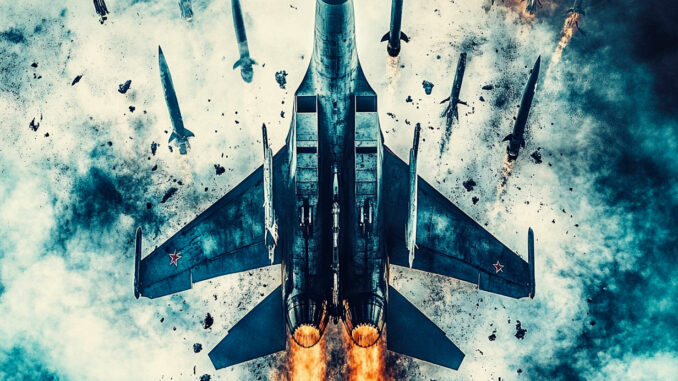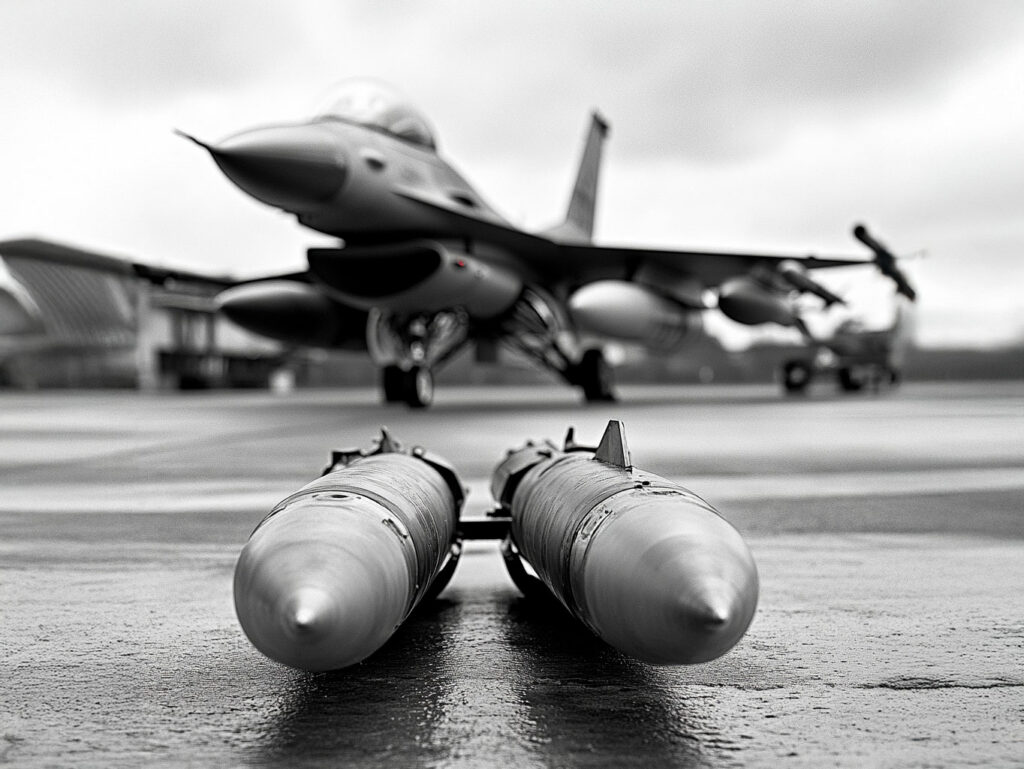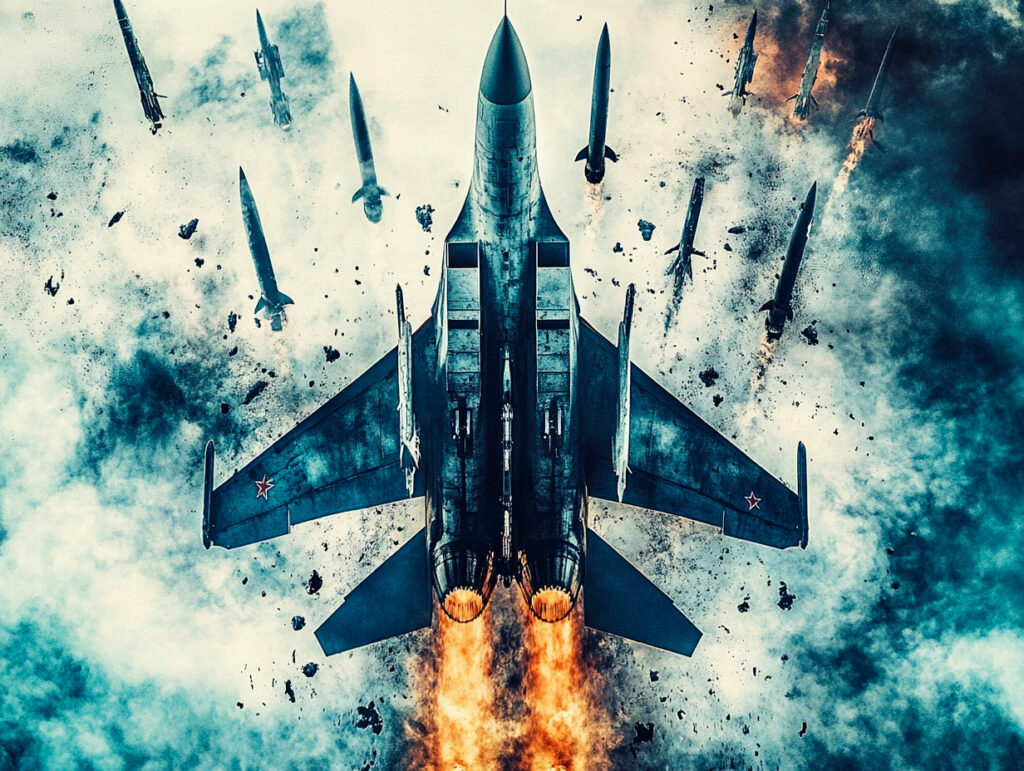
Discover the armaments used by modern fighter aircrafts: missiles, bombs, cannons, and advanced technologies.
Fighter aircraft occupy a central place in modern air forces. Their effectiveness largely depends on the armaments they carry. These aircraft are equipped with various weapons to accomplish a variety of missions, ranging from air defense to ground attack. Fighter aircraft armaments include air-to-air missiles to engage aerial targets, air-to-surface missiles to strike ground objectives, guided bombs for precise strikes, as well as onboard cannons for close combat. Technological advances have led to the integration of sophisticated weapon systems, thereby increasing the operational capabilities of these aircraft. Understanding the armaments of fighter aircraft allows for a better grasp of their role in current military strategies. This article provides an overview of the armaments commonly used by fighter aircraft, emphasizing their characteristics and tactical use. The goal is to provide clear and precise information on this essential subject for the armed forces.
The Role of Armaments in the Effectiveness of Fighter Aircraft
Armaments play an essential role in the operational effectiveness of fighter aircraft. These aircraft must be capable of fulfilling various missions, and selecting appropriate weapons is crucial to achieve this goal.
Air-to-air missiles allow engagement of aerial targets at different distances. For example, the AIM-120 AMRAAM missile, with a range of over 100 kilometers, offers medium- to long-range engagement capability. For close combat, the R-73 missile, equipped with infrared guidance, is particularly effective.
Air-to-surface armaments, such as laser- or GPS-guided bombs, are essential for precise strikes against ground targets. The GBU-12 Paveway II bomb, using a laser guidance system, reaches its target with an accuracy of a few meters, minimizing collateral damage.
Onboard cannons remain indispensable for close air combat and attacking ground targets. The M61 Vulcan cannon, a 20 mm rotary cannon, offers a high rate of fire, increasing the chances of hitting fast and maneuverable targets.
The introduction of advanced weapon systems, like hypersonic missiles, extends the capabilities of fighter aircraft. These missiles reach speeds greater than Mach 5, making enemy defense systems less effective.
The compatibility between the aircraft and its armaments is crucial. The avionics systems and fire control must be perfectly integrated to ensure proper functioning of the weapons. Additionally, the payload capacity, determined by the maximum weight of the armaments, influences the range and maneuverability of the aircraft.

Missiles
A. Air-to-Air Missiles
1. Short-Range Missiles (Infrared)
Short-range missiles are used for close air combat. They operate through infrared guidance, detecting the heat emitted by enemy aircraft engines. These missiles are highly maneuverable and capable of engaging targets at high angles.
The AIM-9 Sidewinder is a classic example of this type of missile. Developed in the United States, it has a range of about 18 kilometers. It is widely used by Western air forces. The R-73, designed in Russia, is renowned for its high agility and its ability to be used with a helmet-mounted sight system, allowing the pilot to target simply by looking at the adversary.
These missiles are essential for ensuring superiority in close combat, where reactivity and precision are crucial.
2. Medium- and Long-Range Missiles (Radar Guidance)
Medium- and long-range missiles allow engagement of targets beyond visual range. They use radar guidance, which can be semi-active or active. In the case of active radar guidance, the missile has its own radar for the final approach phase.
The AIM-120 AMRAAM (Advanced Medium-Range Air-to-Air Missile) is an American missile with a range exceeding 100 kilometers. It offers autonomous engagement capability thanks to its integrated active radar. The Meteor, developed by MBDA in Europe, uses a ramjet engine, giving it a range greater than 150 kilometers and a high terminal phase speed, improving the chances of intercepting maneuvering targets.
These missiles enhance fighter aircraft’s ability to neutralize threats before they become imminent, thus improving the safety of air operations.
B. Air-to-Surface Missiles
1. Anti-Radar Missiles
Anti-radar missiles are designed to neutralize enemy air defense systems. They detect emissions from enemy radars and head toward the source to destroy it.
The AGM-88 HARM (High-speed Anti-Radiation Missile) is an American missile capable of detecting and tracking enemy radar signals. With a range of over 100 kilometers, it allows the suppression of anti-aircraft defenses, thereby facilitating operations of other aircraft.
2. Cruise Missiles
Cruise missiles are used for long-range strikes against strategic targets. They generally fly at low altitude to avoid radar detection and use advanced guidance systems to reach their target with precision.
The AGM-158 JASSM (Joint Air-to-Surface Standoff Missile) is an American cruise missile with a range of about 370 kilometers. It is equipped with an inertial guidance system assisted by GPS and has a warhead capable of penetrating fortified structures.
These missiles allow fighter aircraft to strike well-defended targets without directly exposing themselves to enemy defense systems, thereby increasing mission efficiency and safety.
Bombs
1. Unguided Bombs
Unguided bombs, also called gravity bombs, are non-guided munitions dropped from a fighter aircraft. Their design is simple, making them inexpensive to produce. They rely on gravity and the aircraft’s trajectory to reach the target.
These bombs are used when precision is not essential or against large targets. Their simplicity results in limitations in terms of accuracy. Factors such as wind, altitude, and release speed can affect their trajectory, potentially causing deviations from the intended target.
A common example is the Mk 82, an American bomb weighing 227 kilograms. It is widely used due to its effectiveness and low cost. In Russia, the FAB-250 of 250 kilograms is a frequently employed equivalent.
2. Guided Bombs
Guided bombs are equipped with guidance systems that significantly improve their accuracy. They use technologies such as laser, GPS, or inertial guidance to direct themselves toward the target.
The GBU-12 Paveway II bomb is an example of a laser-guided bomb. It follows a laser beam pointed at the target, either by the launching aircraft or by a ground operator. This allows it to achieve an accuracy of a few meters.
The JDAM (Joint Direct Attack Munition) is a kit that transforms unguided bombs into GPS-guided bombs. By adding this kit to a bomb like the Mk 84 weighing 907 kilograms, a munition capable of striking targets with an accuracy of 10 meters is obtained, even under adverse weather conditions.
The use of guided bombs reduces collateral damage and increases mission effectiveness. They allow fighter aircraft to engage specific targets with high reliability.
Onboard Cannons
Role in Close Combat
Onboard cannons are weapons integrated into fighter aircraft for close air combat and attacking ground targets. They are used when missiles are not suitable, for example at very short distances or when the tactical situation requires a different approach. Cannons allow immediate reaction without relying on complex guidance systems.
These weapons are effective against nearby maneuvering targets. In air combat, the cannon offers an additional option to engage the adversary when missiles have been exhausted or cannot be used safely. On the ground, they are used for close air support missions, targeting light vehicles or infrastructures.
Advantages and Disadvantages
Advantages:
- Reactivity: Cannons offer instant engagement capability without preparation time.
- Versatility: Usable against both aerial and ground targets.
- Independence from Guidance Systems: Operate without requiring lock-on or target tracking.
- Reduced Cost per Shot: Less expensive than using missiles.
Disadvantages:
- Limited Range: Effective primarily at distances under 2,000 meters.
- Accuracy Dependent on Pilot: Success depends on the pilot’s skill and experience.
- Ammunition Consumption: High rate of fire leading to rapid consumption of available munitions.
- Impact on Aircraft Mass: The weight of the cannon and ammunition can affect the aircraft’s performance.
Examples of Cannons: M61 Vulcan, GSh-30-1
M61 Vulcan
The M61 Vulcan is a six-barrel rotary cannon of 20 mm caliber, widely used on American fighter aircraft such as the F-16 Fighting Falcon and the F/A-18 Hornet. It has a rate of fire that can reach 6,000 rounds per minute, allowing saturation of an area with projectiles in a very short time. This cannon uses an electric system to rotate the barrels, ensuring high reliability and a high rate of fire.
GSh-30-1
The GSh-30-1 is a single-barrel cannon of 30 mm caliber, developed in Russia. It equips aircraft like the MiG-29 and the Su-27. With a rate of fire of about 1,500 rounds per minute, it offers superior firepower thanks to larger caliber shells. The GSh-30-1 is appreciated for its relative lightness and its effectiveness against lightly armored targets.
These cannons illustrate two different approaches: the M61 Vulcan focuses on a very high rate of fire with smaller caliber shells, while the GSh-30-1 favors impact power with heavier shells. The choice of cannon depends on military doctrines and the specific needs of each air force.

Advanced Armaments
1. Hypersonic Weapons
Hypersonic weapons are missiles capable of flying at speeds greater than Mach 5 (five times the speed of sound). This high speed reduces enemy defenses’ reaction time and increases the probability of mission success.
The advantages of hypersonic missiles include increased speed and range. For example, the Russian missile Kinzhal (Х-47М2 Кинжал) reaches speeds up to Mach 10 and has a range of over 2,000 kilometers. It is launched from aircraft like the MiG-31K to strike strategic targets at long distances.
In China, the development of the DF-17, a missile equipped with a hypersonic glide vehicle, illustrates progress in this field. This system improves maneuverability and makes the trajectory less predictable, complicating interception by missile defense systems.
Current developments in the United States include the ARRW (Air-launched Rapid Response Weapon) program by Lockheed Martin. This hypersonic missile has been successfully tested and aims to be operational in the coming years. The goal is to provide the U.S. Air Force with a rapid strike capability against high-value targets.
Integrating hypersonic weapons on fighter aircraft poses technical challenges. Constraints include managing the heat generated at these speeds and adapting guidance systems to ensure accuracy despite extreme conditions.
2. Directed Energy Weapons
Directed energy weapons use concentrated forms of energy, such as lasers or microwaves, to neutralize targets without resorting to physical projectiles. These systems offer a nearly instantaneous engagement speed and a reduced cost per shot.
The operating principle of laser weapons is based on emitting a high-intensity light beam. This beam can damage or destroy sensitive components of the target, such as sensors or electronic systems. Microwave weapons concentrate electromagnetic waves to disrupt electronic circuits.
Future prospects for integrating directed energy weapons on fighter aircraft are promising. The U.S. Air Force’s SHIELD (Self-Protect High Energy Laser Demonstrator) program aims to develop an onboard laser system capable of destroying incoming missiles. Current prototypes focus on miniaturizing components and increasing power output.
One of the main challenges is energy management onboard the aircraft. Directed energy weapons require a stable and powerful power source. Additionally, cooling the systems is essential to maintain performance and reliability.
Adopting directed energy weapons could improve fighter aircraft’s defensive capability. They would offer additional protection against emerging threats, such as drones or hypersonic missiles, complementing existing systems.
War Wings Daily is an independant magazine.